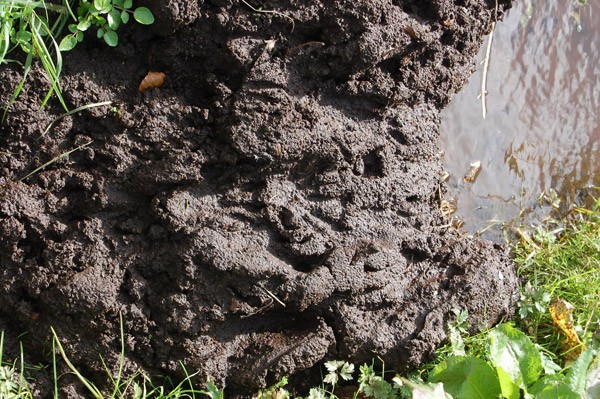Sonoma County has seen plenty of forest-to-vineyard conversions in recent years, usually involving chainsaws and bulldozers. Yet in what may be a first of its kind, Sausalito-based Berg Holdings Co. is planning to create a 528-acre ranch suitable for growing wine grapes and other crops by literally building land from scratch.
Or is that the plan?
The Carneros River Ranch lies at the mouth of the Petaluma River, in its historic floodplain, directly across from Port Sonoma. Companies controlled by Berg own both the ranch and the port. At the port, Berg plans to assemble an industrial complex capable of receiving and processing 18.5 million cubic yards of wet dredge spoils from the San Pablo Bay, pumping the material under Highway 37 onto the ranch site. This fill material will be spread, dried and compacted as it’s received over the span of 20 years. When complete, the ranch will have risen from one foot above sea level to between seven and 11 feet.
“This material is fine, salty clay without a lot of organic matter,” explains J.T. Wick, a principle with Berg Holdings overseeing the project. “We mix worm castings with it to create fertile soil.”
Beyond the river’s southern stretch was once a brackish marsh teeming with wildlife. But levees built by ranchers in the late 1800s cut off seasonal floods and destroyed much of the riparian habitat. Today, the low elevation of the Carneros Ranch and its separation from the flows of the river and bay make it suitable only for shallow-rooted crops, like wheat. Lifting the elevation is therefore being sold as an “agricultural enhancement,” and as such, the Sonoma Land Trust has given the project its blessing.
Numerous environmental organizations, like the Sierra Club’s Redwood Chapter, are taking a different position. Last July, the Sierra Club asked the County Board of Zoning Adjustments (BZA) to require a full environmental impact report. The BZA denied that request, ruling instead that the existing mitigated negative declaration (MND) was sufficient. The Sierra Club and other organizations are appealing the BZA’s decision. A hearing is set for January.
“Given the proposed expansion of the port of Sonoma into an industrial facility, which is unaddressed in the negative mitigated declaration, the county owes it to the public to do a full EIR on the project,” says David Keller of the Petaluma River Council. Keller’s group hasn’t formally joined the Sierra Club’s appeal, but says, in support, “the appeal should be sustained.”
Berg Holdings’ lawyer Stephen Butler told Sonoma County officials back in October that the Sierra Club’s concerns were misinformed. “The project and the MND were attacked at the last minute without analyzing either the project file or the MND itself,” Butler wrote to supervisor David Rabbitt. “As a result of the Club’s appeal, the opportunity to redirect dredge material has been lost for this season,” concluded Butler.
Rue Furch, who served on the BZA from 1991 to 2009, has studied the project’s documentation and has concerns about the viability of agriculture even after the fill is imported. “With the amount of salinity in the soils, groundwater and brackish layer under the area, agriculture is hard to imagine as a viable enterprise. There are farms north and east of this area that have been pulling sea water in their wells for many years.”
Concerns like these have led many to question if improving agriculture is in fact the point. Berg Holdings has a $20 million congressional earmark to expand commercial ferry operations at Port Sonoma. Berg Holdings stands to be paid for accepting the dredge spoils, making the project profitable with or without future farming. Some have speculated the project is a first step toward something larger, perhaps involving rail, barge, and truck freight of aggregate materials or garbage.
Such speculation is “crazy,” says Wick. “All we can use this project approval for is to bring in an offloader and the barges, and the dredge material can only be used for soil enhancement. We’re not going to be bringing aggregate in.”
The Sonoma Land Trust sued Berg Holdings in 2005, when the company began dumping dredge material on the ranch in much smaller quantities than is now proposed. Concerned that the disposal—profitable for Berg—would harm agriculture, the Land Trust prevailed. Settlement terms created “strict protocols and performance standards on the quantities, locations and handling of materials, and stringent standards for salinity, acidity and contaminants,” according to a 2008 Sonoma Land Trust press release. Importantly, affected land must also be returned to agricultural operations.











